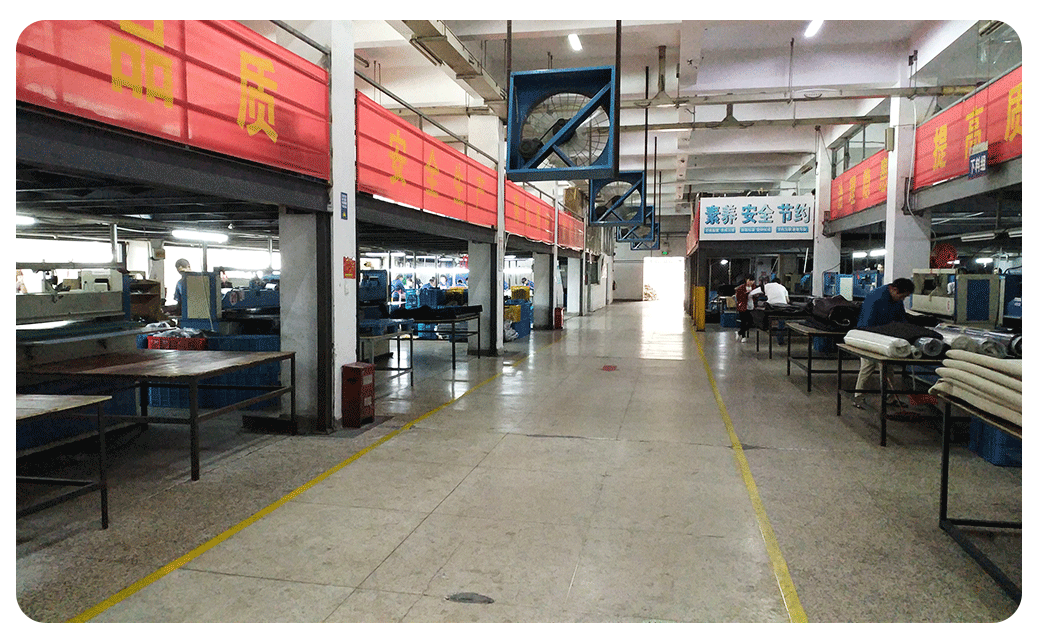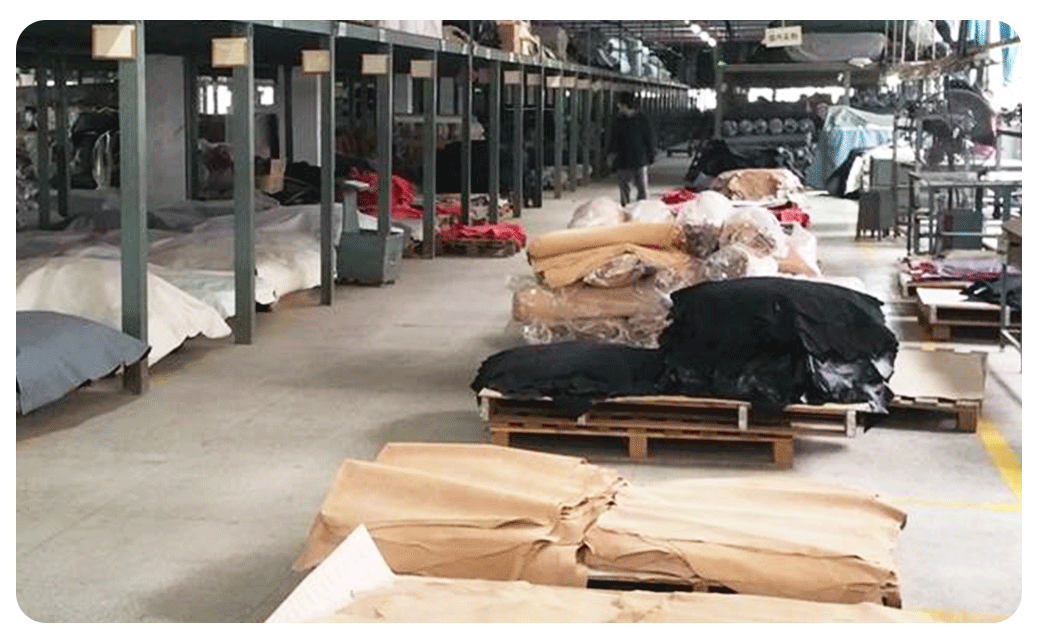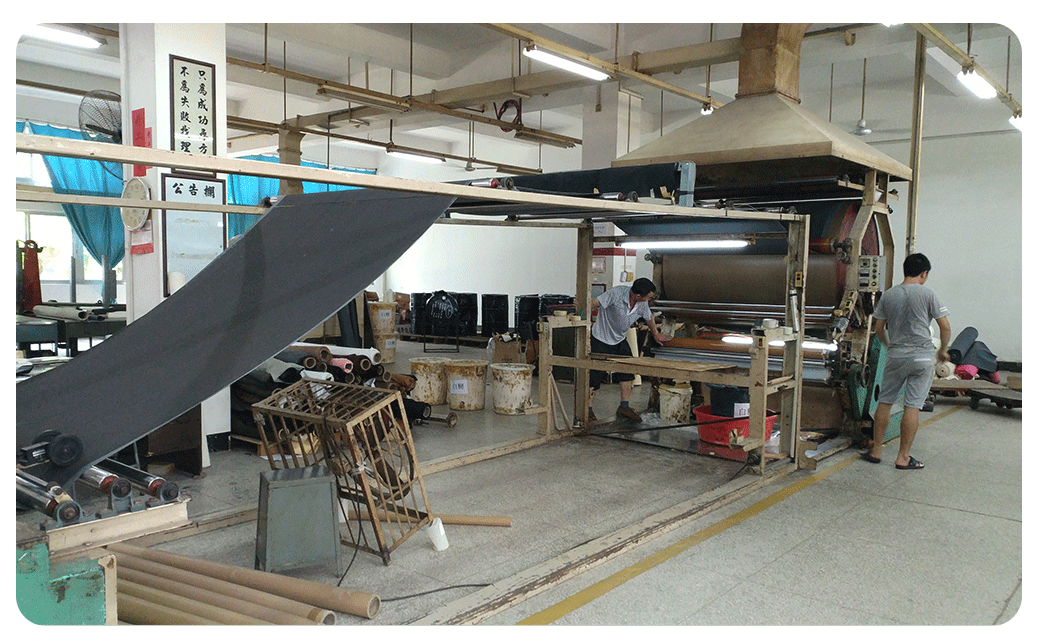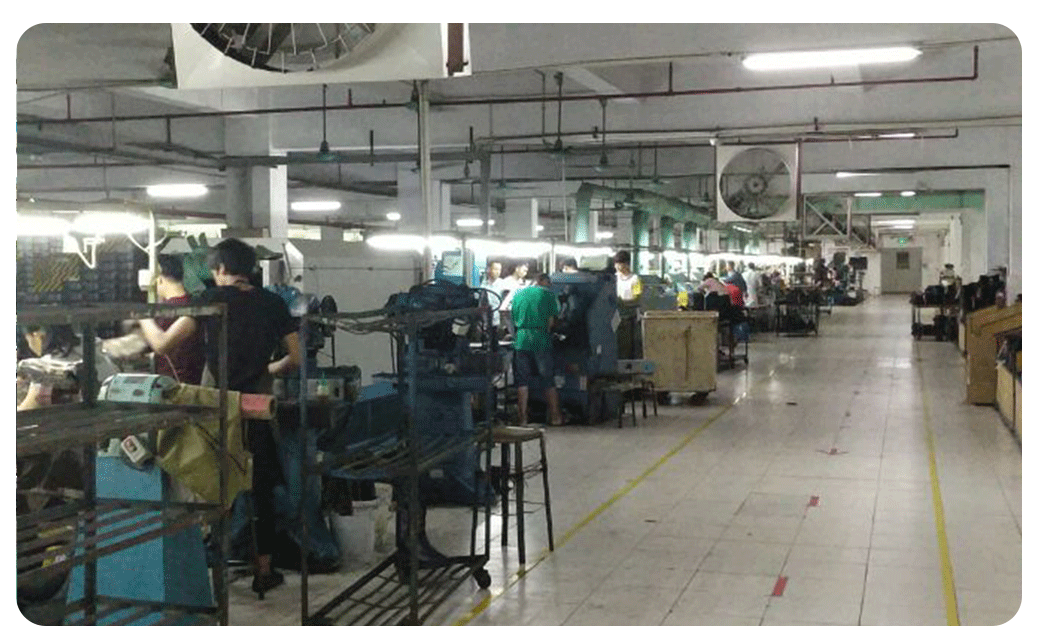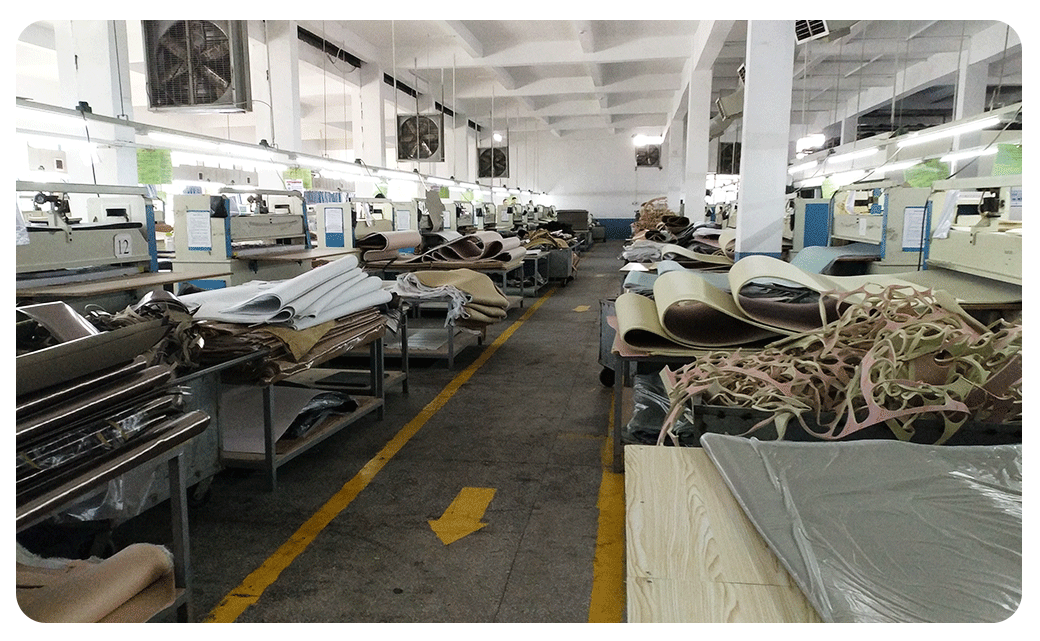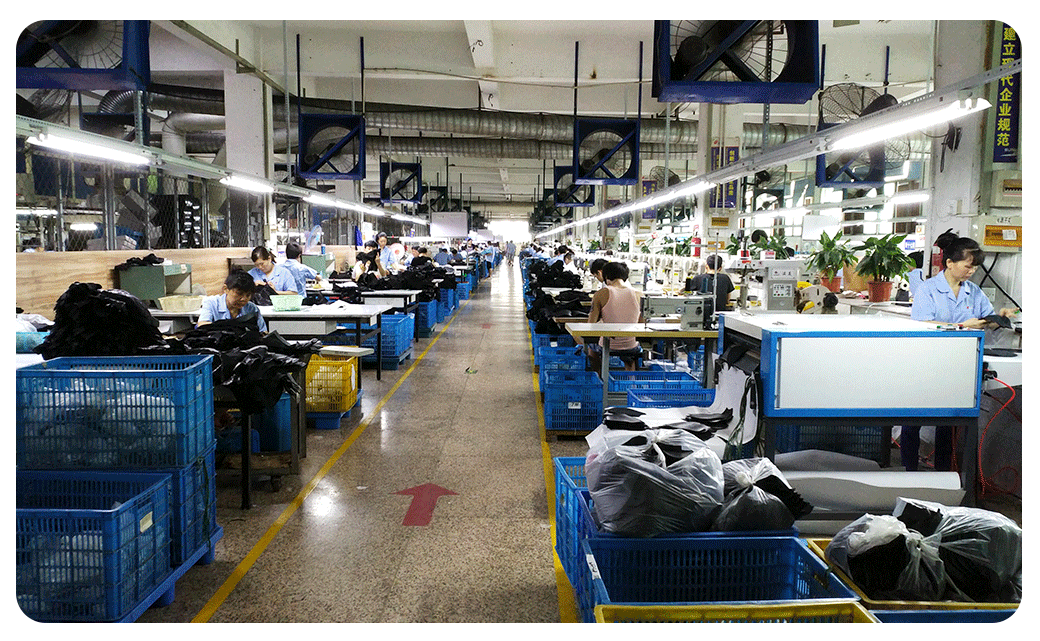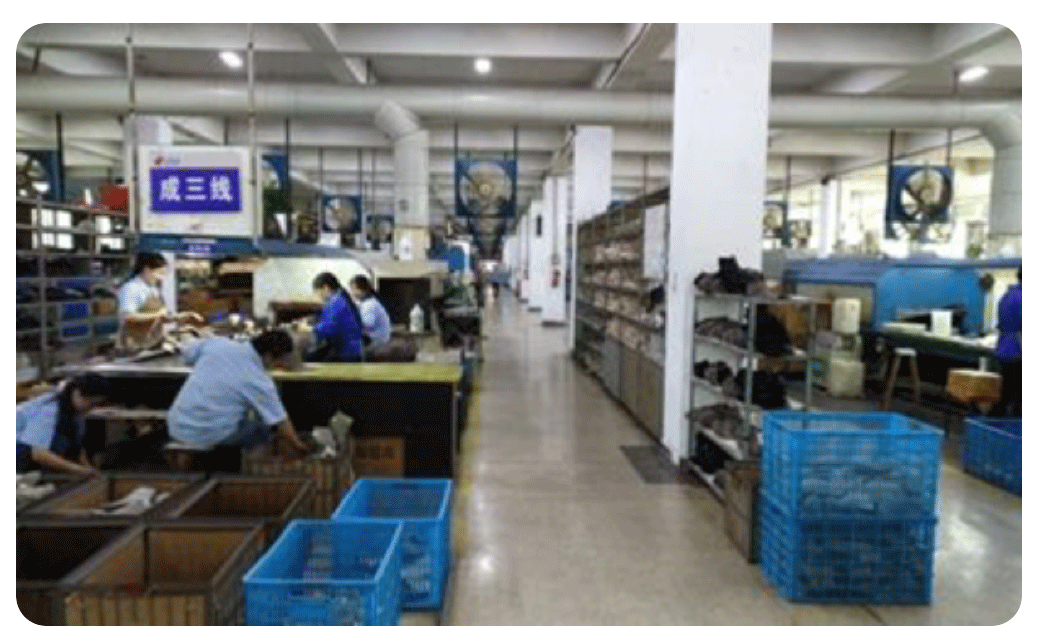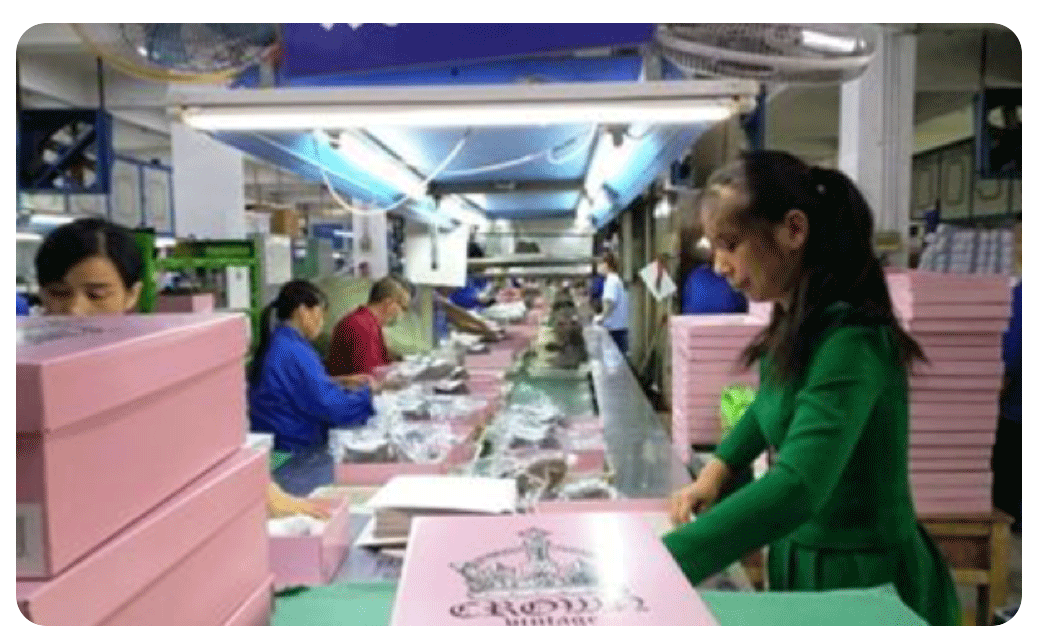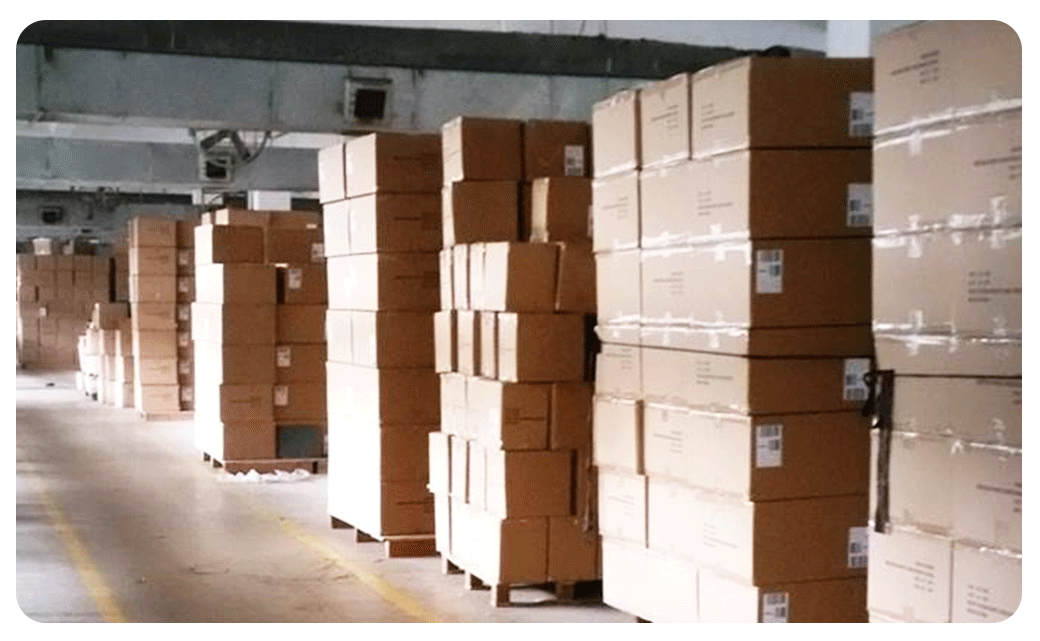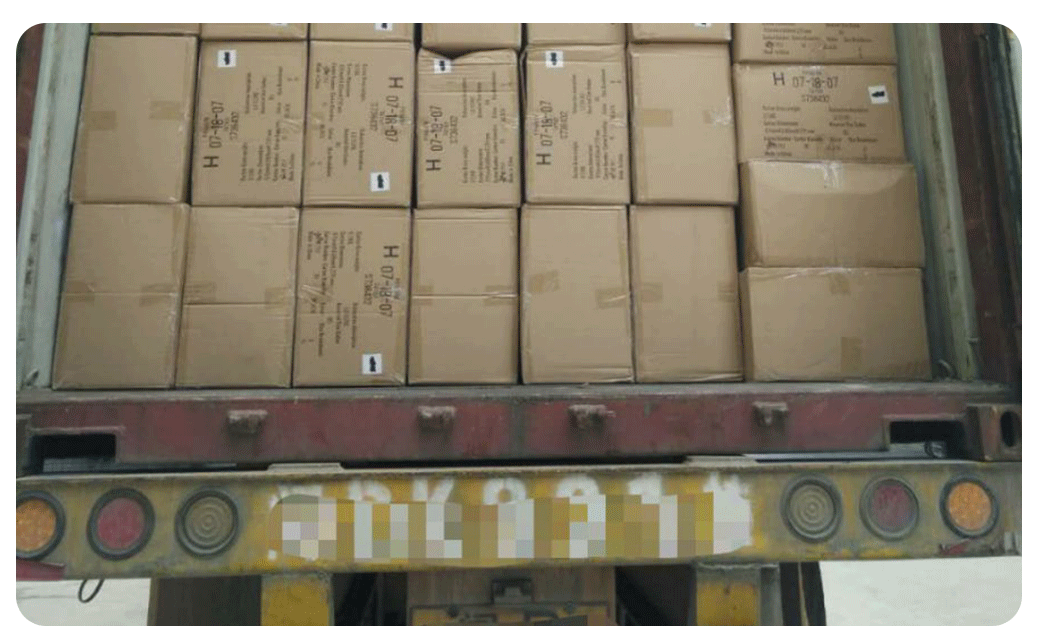Building
- Ensure that roofs,windows and walls do not leak.
- Twice a year thoroughly clean all warehouse and production areas, including walls, floors, ceilings, fans & equipment.
Pre-Production (Incoming Warehouse)
- Use a moisture meter to check the moisture content of incoming materials and packaging. Materials with a reading higher than 15% should be rejected.
- All materials, components, hardware, and packaging are on pallets or racks, 12 cm above the cement floor, 60 cm from exterior walls, and 150 cm away from outside windows or doors.
- All materials are covered or sealed against dust exposure.
- Have adequate, functioning fans for good air circulation & ventilation, or dehumidifiers, in order to maintain a relative humidity of 50-60%.
- Control materials inventory with FIFO (first in, first out) system
Materials Lamination/ Process
- Add anti-mildew agent into the acetic acid resin during materials lamination to backings.
- Post a chart in laminating room showing the correct time & temperature needed to laminate different combinations of materials.
- Ensure to have fans for cooling after lamination and before winding laminated material in roll.
- Cut laminated materials within 1-2 days of the combining process.
- Control materials inventory with FIFO (first in, first out) system.
- All material rolls are on pallets 12 cm above the cement floor, 60 cm from exterior walls, and 150 cm away from outside windows or doors.
Production (General)
- Clean production and packing area floors, conveyors, & packing surfaces daily with chlorine or Formalin with water & then wipe them dry with clean cloths.
- Spray all floors and wall corners monthly with chlorine or Formalin with water.
- Have adequate, functioning fans for good air circulation & ventilation.
Production (Cutting)
- Cut pieces should be stored in plastic bags prior to stitching. Cut pieces should go into stitching 1-2 days after cutting.
Production (Stitching)
- All finished uppers should be stored in non-breathable polybags. A paper tissue with 1 drop of Wasaouro oil on it should also be placed inside of each bag. The finished upper storage room should have a relative humidity of 50-60%.
- Finished uppers stitched outside of the factory should be inspected for mold when received at the main factory. The moisture content of an upper in each bag should be checked with a moisture meter and need to not over 15%.
Production (Lasting)
- Have a clean, dry stationary wipe positioned at the end of conveyors to remove dust from the belt. Replace daily.
- Ensure that the adequate and right temperature, time and line speed in the oven.Check the oven (tunnel) thermometer's temperature often.
- Use fans instead of air conditioning during the cooling process of lasted uppers to minimize moisture if the relative humidity is higher than 60%. Need to keep dry and do not allow standing water in or around the cooling tunnel if refrigerated cooling must be used.
Production (Packing)
- Packing line workers should have clean uniforms or aprons, & should not wear gloves.
- Check moisture content of the shoeboxes, tissue & paperboard divider using moisture meter not to exceed 15%.
- Ensure that the packing line dryer temperature & time is high enough & long enough to dry out shoe linings. At the end of the dryer, run the shoes & packaging under an ultra-violet sterilizer to help remove bacteria.
- Make sure that the dispenser is sealed and not cracked or broken. Only have 1-2 chips pulled outside the opening at a time. The anti-mold chip should be attached in the any corner of the shoebox lid bottom, by the end panel that the retail shoebox label is attached to. If polybags are required, attach 1 chip inside of each polybag.
Finished Goods
- Keep shipping cartons dry. Have adequate, functioning fans and or dehumidifiers providing air ventilation in order to maintain a relative humidity of 50- 60%.
- Pack shoes into shipping cartons as soon as possible after being removed from the dryer and shoe box lids are closed.
- Stack packed finished goods on pallets. Keep cartons 12 cm above the cement floor, 60 cm from exterior walls, and 150 cm. away from outside windows or doors.
Miscellaneous
- Only covered vehicles are used to transport raw materials and finished goods.
- Trucks and containers that have been used to haul produce, natural fibers, or other materials that have a high risk for mold contamination are not used.
- Containers are checked to make sure the inside is clean and dry, and the exterior walls/roof are solid and do not leak, before they are loaded with finished product.
- Containers found to have moisture on the inside, and exterior walls/roof that are not solid and leak, are rejected and returned to the shipping company.
- Only containers that are dedicated to shipping dry boxed goods are used to ship our footwear.
- Pictures are taken of the inside of each container, to verify it is in good condition and dry, and the date, container number, and list of all the PO's that are loaded inside the container are recorded and kept for one year.
